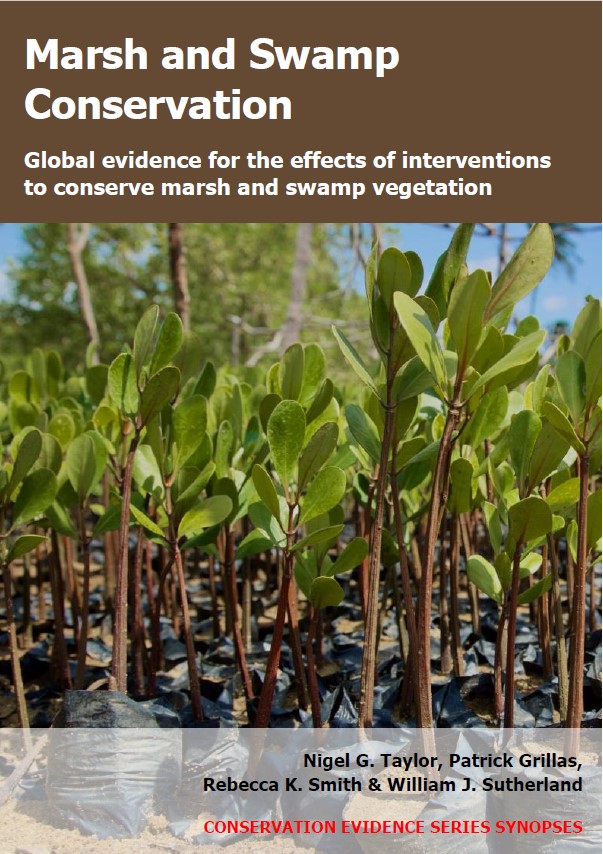Transplant or replace blocks of vegetation: brackish/salt marshes
-
Overall effectiveness category Unknown effectiveness (limited evidence)
-
Number of studies: 1
View assessment score
Hide assessment score
How is the evidence assessed?
-
Effectiveness
32% -
Certainty
30% -
Harms
10%
Study locations
Supporting evidence from individual studies
A replicated, controlled, site comparison study in 2004–2007 of four areas of an estuarine salt marsh in New South Wales, Australia (Green et al. 2009) found that transplanting sods of the dominant marsh plant saltwater couch Sporobolus virginicus had no significant effect on plant community composition. After 3–4 years, the overall plant community composition was statistically similar in degraded areas planted with saltwater couch sods and degraded areas that had not been planted (data reported as a graphical analysis). Where saltwater couch was not transplanted, it spread from remnant patches in and around the study area. In 4 of 12 comparisons over three years, planted areas contained a plant community that was >70% similar to natural reference areas (vs 2 of 12 comparisons for unplanted areas). Methods: Between 2003 and mid-2004, four degraded areas of tidal salt marsh around a lagoon were restored using multiple interventions, including fencing to exclude vehicles and filling eroded patches with sediment. Two of these degraded areas were also planted with sods of saltwater couch (100 cm2; 1 m apart) cut from nearby natural marshes. Two additional areas of natural, undisturbed salt marsh were used for comparison. Plant species and cover were surveyed six times between July 2004 (after intervention) and April 2007. Each survey used fifty 1-m2 quadrats/area.
Study and other actions tested
Where has this evidence come from?
List of journals searched by synopsis
All the journals searched for all synopses
This Action forms part of the Action Synopsis:
Marsh and Swamp Conservation
Marsh and Swamp Conservation - Published 2021
Marsh and Swamp Synopsis





)_2023.JPG)














